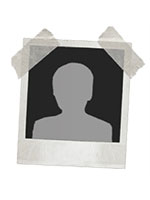Play of the same RPG rules can turn out quite differently, depending on whether it’s within a one-shot adventure, a sequence, or a campaign.
What’s in a Game?
Most RPGs were originally designed for long campaigns, not one-off (one-shot) adventures or a shortish sequence of adventures (typically less than a dozen). A sequence can be a short campaign, but lacks many of the hallmarks of a campaign.Another way to differentiate is to ask yourself how many compelling things are happening. Some characteristics to consider:
- GMs and Players: The number of GMs and players, and how consistently they show up, matters a lot. Especially in campaigns with multiple GMs.
- Player Consistency (Years of Play): Sequences and campaigns usually involve the same group of adventurers, give or take. But in campaigns, that group can change a lot over time.
- Single Story Arc: What happens outside of the game sessions? If it’s “not much,” you’re in one-shot or sequence territory. If it’s “a lot,” you’re likely in a campaign.
- Length and World: The setting or “world” isn’t usually important in one-shots, maybe a little in sequences, but it’s vital to campaigns. Campaigns and sequences have a continuity that one-offs just don’t. There’s a huge difference in feel between a campaign that lasts years and a sequence that lasts a few sessions.
- Rate of Progression: Campaigns are all about slow character progression. This is why most commercial “adventure paths” are actually sequences – they’re designed for fast leveling. In a true campaign, it’s all about the journey.
One-Shots: Bang, Zoom, Done!
Older commercial adventure modules were often one-shots. There is a definite objective and an ending attainable in a short period of game-time. In a one-shot, there is one compelling thing happening at a time.Some activities can only be done as one-shots. I think of my old “Barroom Brawl” scenario from White Dwarf #11, where 15 players individually receive pre-generated characters and motivations, and then play out the adventure in a tavern/inn. It’s necessarily the case where the characters will not be used any further (as with most one-shots) and where the fun comes purely from the interaction of the characters and their motivations rather than the more typical incentives of RPG play.
One-shots are more likely dominated by tactical concerns. That is, they’re more strategic, focusing on what you do before or aside from fighting; and tactical, what you do during a battle.
Sequence: Short & Sweet (and Level-y)
“Adventure paths” consisting of several adventures designed to let characters regularly rise in level, are usually a sequence/“short campaign” though the consequences (level rise) are quite dramatic and drastic. Sequences will often be dominated by one story-arc or objective. An example is the trilogy of extensive modules that made up Gary Gygax’s famous “Against the Giants.”Sequences and campaigns tend to require players who work together. If it’s a game with an overarching narrative, something they could “lose” all the way up to being wiped out, they’ll have to work together. Yes that’s also true of one-shots, but the players may not care about their characters in one shots, and may not mind how others react to a lack of cooperation, whereas in even a sequence players may become attached to the characters.
Advancement tends to be a hallmark of sequences. This is what makes almost all commercial “adventure paths” sequences, because they are designed for characters to rise in level quite rapidly. Players can sometimes become focused on the destination (power increase) rather than the journey (adventure), whereas you can make the case that a hallmark of campaigns is that people focus on the journey and not the destination. Though this is often associated with video games (where rapid leveling is part of the way the game keeps players coming back for more), it predates computer RPGs.
Campaigns The Long Haul
Commercial adventure modules are rarely campaigns because they need to be at least book-length to be comprehensive, and even then it's likely missing something. Campaigns tend to have stronger strategic aspects than sequences or one-shots. In a campaign, several compelling events are often happening at the same (game) time. The longer the campaign, the more likely that there will be several story arcs, one after the other or simultaneously.Consistency of play, with many of the same people involved in the campaign over many years, is a characteristic of campaigns. You can also have more than one GM in a campaign provided there are one or two GMs who are “in charge”. The “world” is shared by the GMs. If it’s a storytelling campaign, how much cooperation will be required depends on the GM. Characters can also be shared amongst those campaigns. This also makes it easier for players to drop in and out, depending on schedules. Player attachment to characters will certainly be strong in a game campaign.
It's not uncommon for companies to publish megadungeons and overarching campaigns, but in the early days before digital products such campaign-style producers were rare. The old TSR boxed sets such as Dragon Mountain came closest. Even then, a characteristic of a true campaign is that it changes quite significantly over time: both the players and the objectives, often the overarching story itself.
Next time, I’ll discuss each of the three modes of play (one-shot, sequence, and campaign) in more detail.
Your Turn: Which of these three alternatives do you prefer?

